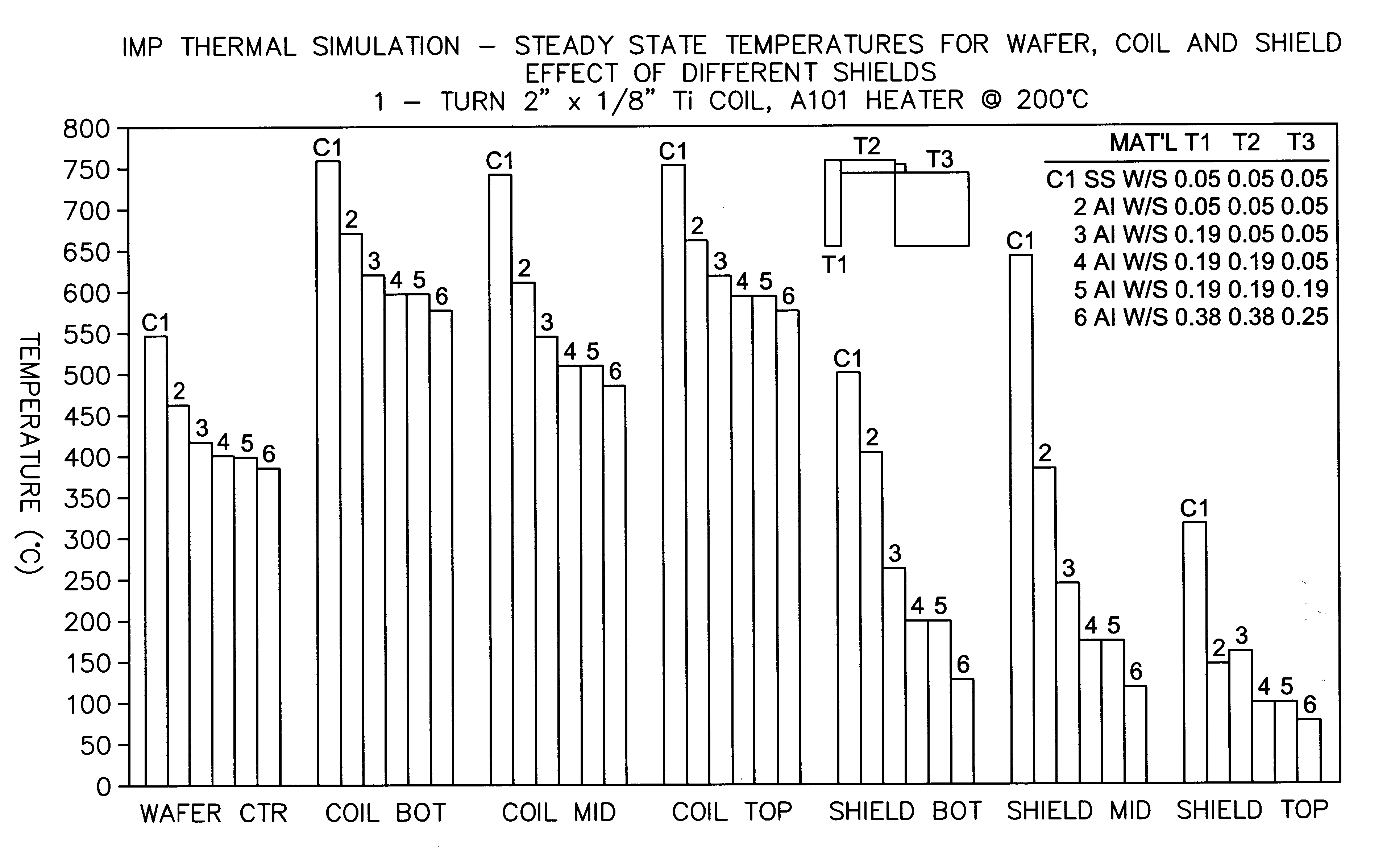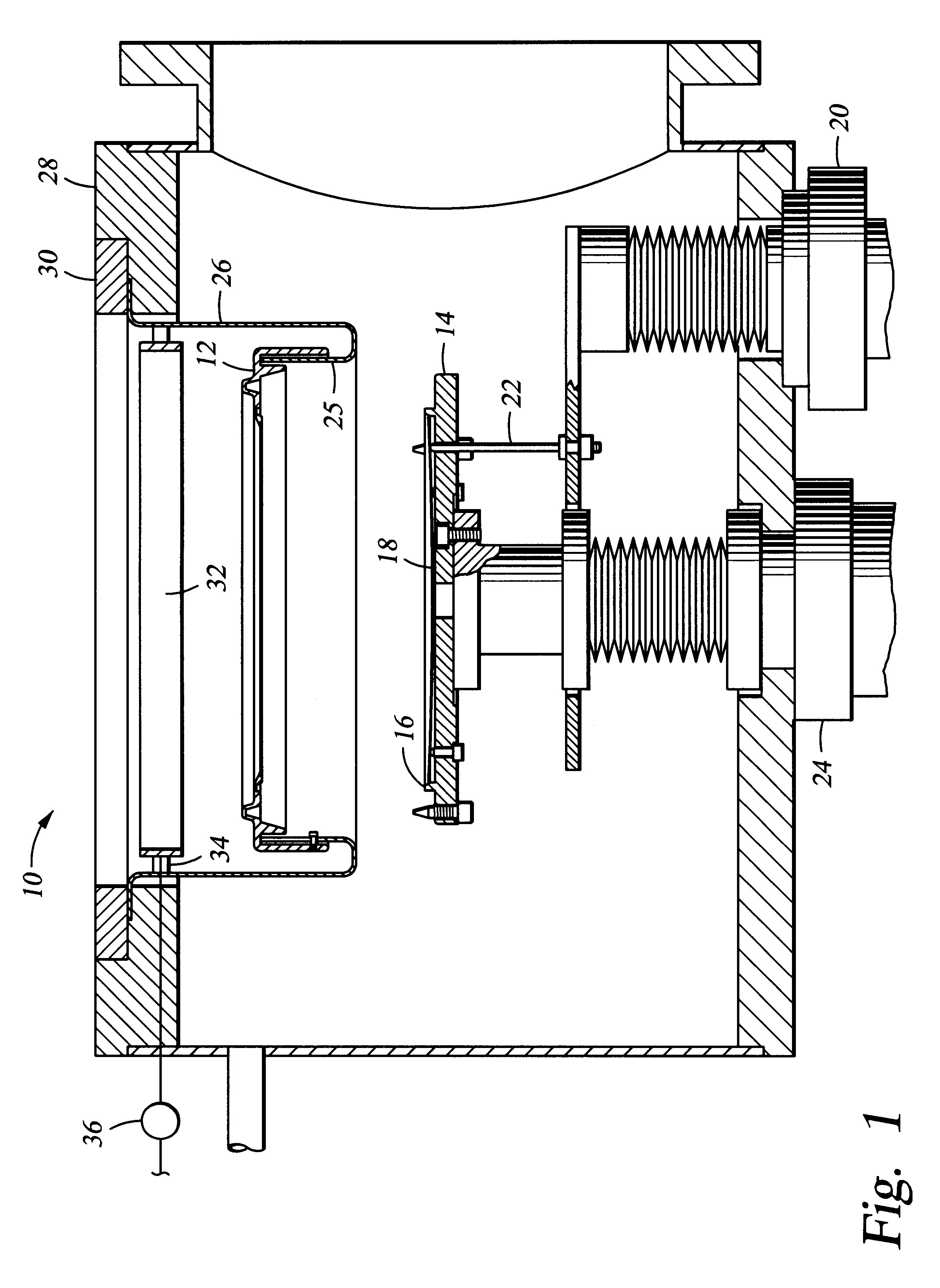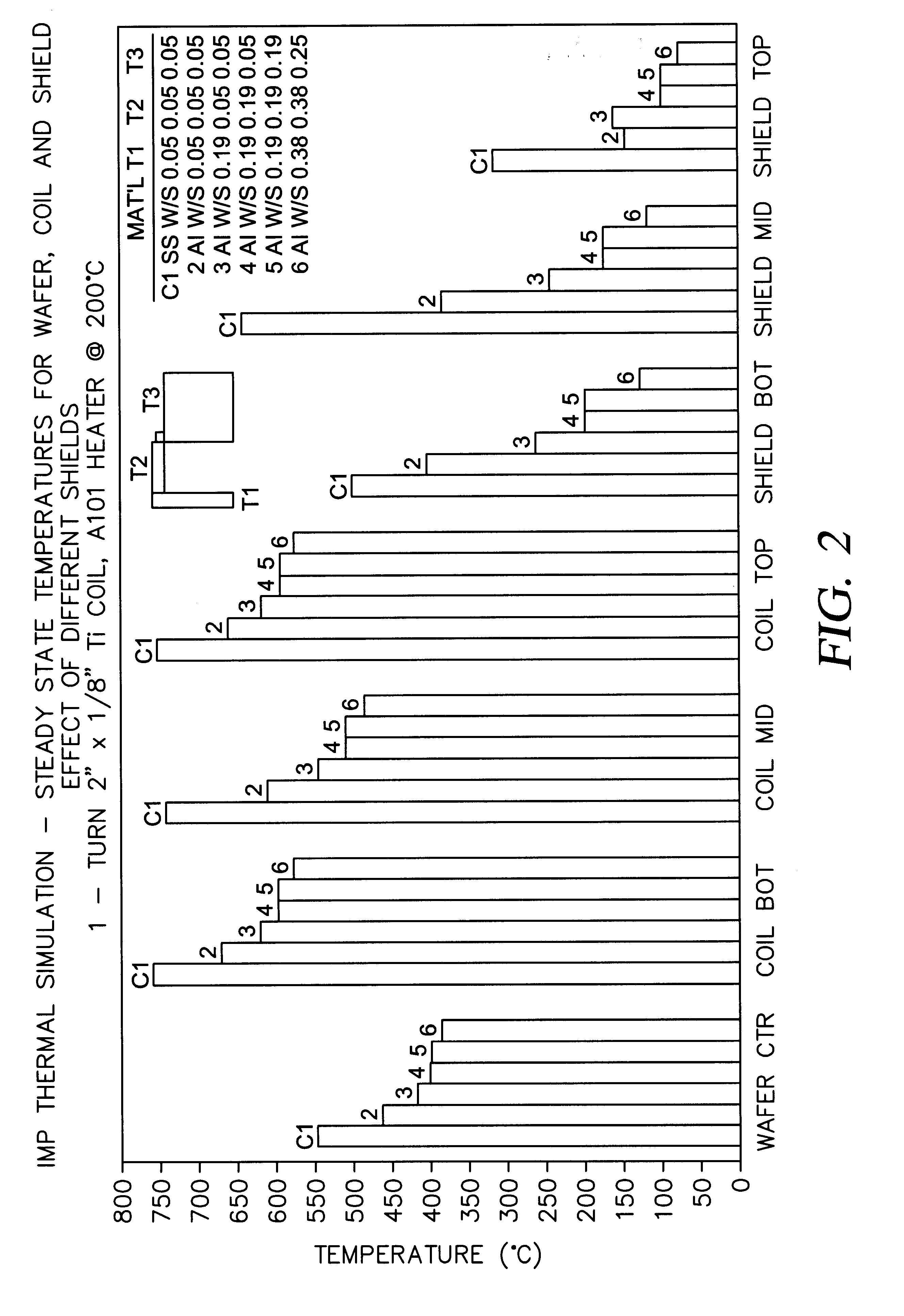Aluminum deposition shield
a shield and aluminum technology, applied in the field of aluminum deposition shields, can solve the problems of shield accumulation, negative charge or grounded, and the tendency of rf energy applied to the coil to generate heat within the chamber, and achieve the effect of reducing chamber cooling, accumulating heat during wafer processing, and reducing the cooling effect of the chamber
- Summary
- Abstract
- Description
- Claims
- Application Information
AI Technical Summary
Problems solved by technology
Method used
Image
Examples
Embodiment Construction
of the present invention was simulated under wafer processing conditions and compared to a stainless steel shield Example C1. During wafer processing, the wafer was heated to 200.degree. C. Each shield was supported by connectors which provides some convection of heat to the shield. Temperatures within the vacuum chamber were recorded at the wafer center, the shield bottom, the shield top, the shield middle, the coil bottom, the coil top, and the coil bottom. Thickness of the shields are shown in FIG. 2 along with the temperature measurements. The thicker aluminum shields 5,6 provided the lowest steady state shield temperatures.
While the foregoing is directed to the preferred embodiment of the present invention, other and further embodiments of the invention may be devised without departing from the basic scope thereof. The scope of the invention is determined by the claims which follow.
PUM
| Property | Measurement | Unit |
|---|---|---|
| thickness | aaaaa | aaaaa |
| thickness | aaaaa | aaaaa |
| thickness | aaaaa | aaaaa |
Abstract
Description
Claims
Application Information
 Login to View More
Login to View More - R&D Engineer
- R&D Manager
- IP Professional
- Industry Leading Data Capabilities
- Powerful AI technology
- Patent DNA Extraction
Browse by: Latest US Patents, China's latest patents, Technical Efficacy Thesaurus, Application Domain, Technology Topic, Popular Technical Reports.
© 2024 PatSnap. All rights reserved.Legal|Privacy policy|Modern Slavery Act Transparency Statement|Sitemap|About US| Contact US: help@patsnap.com










